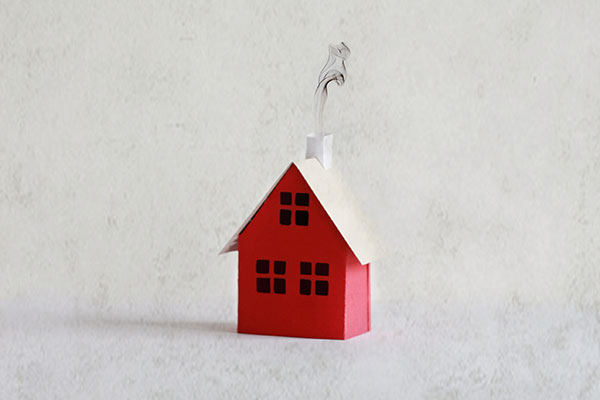The UK government’s call for affordable homes presents a rare opportunity for architects to re-think the nation’s domestic housing. They will have to bring local planners, developers and the public with them, which adds to the challenge, but to shape the face of the country for the next two hundred years (if they do it right) is surely worth the effort.
The government is clearly focusing its housing agenda on creating first homes or “starter homes.” The very term suggests small, basic, densely built houses with tiny gardens, little storage and inadequate parking. The average price of a starter home is just under £200,000, or 7.5 times the average UK income. Considering that many buyers of these homes will move within five years, two major questions arise: 1) Can starter homes be designed to be better value for money? 2) Just how well do the designs of today’s homes meet the needs of buyers, and the environment?
Solutions from the past
Sometimes lessons can come from unexpected places. While new starter homes incorporate the latest heating, lighting, water management, insulation, and so on, learning lessons from the past can still be important.
One such lesson comes from the Levittowns. These were inexpensive, post-WWII developments in several U.S. states that were ridiculed for their cookie-cutter conformity. However, comparing an early picture of Levittown, New York, with a look at a satellite and street view of the neighbourhood today will show how houses have been added to, and the area matured and developed.
Writing about housing development, J. P. Taylor cites Herbert Gans, a sociologist and Levittown resident, whose 1967 social study, The Levittowners noted: “a new community is shaped not by the builder, the architect/planner, the organisational founder, but by the aspirations with which the residents come.”
This is a powerful idea that does not appear to have been well explored and deserves to be. The Levittown lesson is that starter homes can become homes for life when they include the potential for development. They can enable the aspirations of residents to be realised without having to uproot families, leave friends, incur more debt and contribute to social instability.
In addition to the Levittowns, other important design lessons can be learnt from looking to the past:
For instance, what is it about Victorian terrace houses that keeps them so popular with home-buyers? Is it just that their locations are good?Among other things, they were built of materials that last; they are compact; they are often spacious with large windows and big gardens; they can be individualised by their owners and provide a unit that can be modified and modernised. Unlike other styles, they have also aged well.
A look at the New England 'three-decker' houses might also provide some inspiration. Built between 1880-1920, these provided a standard of working class accommodation only dreamt about in Europe. With 360° light, typically they comprise a sitting room, dining room, kitchen, pantry, laundry room, sunroom, two or three bedrooms and often a porch or balcony. The cost/accommodation ratio is highly favourable, and land use is very efficient.
Possibilities for design innovation
A first consideration could be the notion of building a starter home that can be readily and sensibly expanded. Further to this some areas of housing design that could be innovated are:
Rethinking roofing: Is there not a suitable modern material that could provide an alternative to clay or tiles that need so much support that they ruin potentially functional loft space?
Rethinking foundations: Not using the space under a house is failing to utilise available space. Many London terraced villas were built (notably by Cubitt) at ground level, and the street level was then raised, creating lower ground floors, and making installing gas and water (and later, electricity and telephone) infrastructure much easier. Partially underground space also provides extra living space, laundry rooms, storage or parking.
Central heating systems for blocks of flats: Building flats where each unit has its own heating system is wasteful, expensive, and potentially unsafe. With a single boiler for an entire building, energy use can be made more efficient; the patchwork of different sorts of heating and different standards of maintenance are eliminated and heating costs could be covered in the management fee (whether owned, leased or rented). This would also have the benefit of protecting the poor and elderly from hypothermia, and everyone would benefit from properly maintained boilers.
Improved kitchen design: The rise of council recycling regulations has meant that sorting waste within the home has become necessary, but few kitchens have space for the additional bins required. Councils should insist that new housing plans provide space in kitchens for waste sorting. Architects should work with kitchen designers to find efficient solutions for this 21st century challenge.
Less space for more money
While lower-end housing in the UK has benefitted from improved materials, insulation, fire safety, and appliances, the standard of the accommodation itself has not improved. For all the house-price inflation, the homes themselves have been shrinking for decades.
The Royal Institute for British Architects’ 2011 report, “The Case for Space: The Size of England’s New Homes,” establishes a compelling case for improved inside and outside accommodation. Among the telling findings of its surveys are:
- The top three things people look for when moving home are outside space (49%), the size of the rooms (42%), and proximity to local services (42%).
- 31% of people would not consider buying a home built in the last ten years, or would only consider it as a last resort. Of these, 60% said it was because the rooms are too small, 46% said they lack style, and 45% were concerned about the lack of outside space.
The report also notes the social impact of smaller houses:
“A lack of space has been shown to impact on the basic lifestyle needs that many people take for granted, such as having enough space to store possessions or even to entertain friends. In more extreme cases, lack of adequate space for a household has also been shown to have significant impacts on health, educational attainment and family relationships.”
The housing challenge is clear; the opportunity is here. It is time to start thinking out of the box, literally, and find new housing designs that are affordable, sustainable, and have popular appeal.
Related articles
-
Communities Creating Homes
David Palmer FRSA
David Palmer FRSA lives just outside Abergavenny, and since 2012 he has been the Co-operative Housing Project Manager working across Wales to promote social, financial and digital inclusion through a range of projects.
-
Challenging the Broken Model for Older Peoples' Housing
Paul Eastwood
Paul Eastwood encourages us to be more humane, more caring, more ambitious, and more new century than old in our thinking and approaches to the housing model.
-
Co-operative and Community Led Housing (CCLH) across Wales
Dave Palmer FRSA
Dave Palmer FRSA follows up a recent RSA event in Wales with his thoughts on 'cohesive communities in Wales'.



Be the first to write a comment
Comments
Please login to post a comment or reply
Don't have an account? Click here to register.